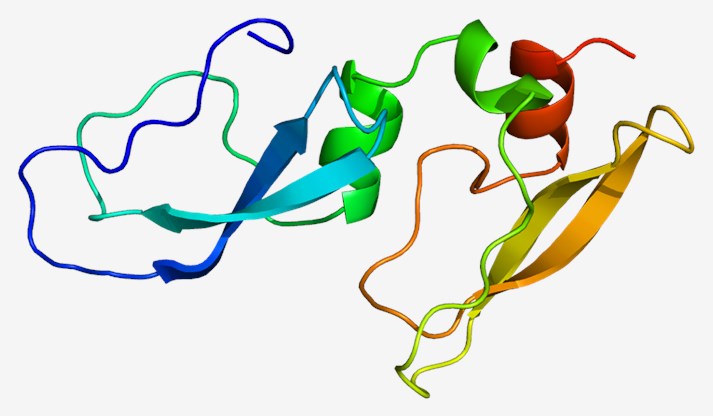Creative Biolabs is specialized in the discovery of in vitro diagnostic (IVD) antibodies, which can specifically recognize and bind different biomarkers of various diseases and show great value in the diagnosis, treatment, and prognosis of these diseases. With advanced technologies and long-term scientific expertise, Creative Biolabs has achieved great success in IVD antibody development. Now, we can provide a large portfolio of premade or customized IVD antibodies targeting potential biomarkers of kidney diseases, such as alpha-1 microglobulin (A1M).
Introduction of Alpha-1 Microglobulin
A1M, also known as protein HC (for Heterogeneous Charge), is a 27-kDa glycoprotein first discovered in pathological human urine. A1M has been defined as an immunomodulatory protein with a broad spectrum of possible clinical applications and a promising marker for evaluation of the tubular function. A1M is a monomeric protein composed of a 183-amino-acid peptide carrying three carbohydrate chains: two complex carbohydrates are N-linked to asparagine at residues 17 and 96, and the other simple carbohydrate is O-linked to threonine at position 5. A1M is synthesized by the liver, rapidly distributed by the blood to the extravascular compartment, and is found in most organs in interstitial fluids, connective tissue, and basement membranes. The most well-known function of A1M is to bind and degrade heme, functioning as a radical scavenger as well as a reductase. In addition, it has several immunosuppressive properties, such as inhibition of antigen-induced lymphocyte cell proliferation, cytokine secretion, and the oxidative burst of neutrophils.
 Fig.1 Structure of human A1M.Distributed under CC BY-SA 3.0, from Wiki,
without modification.
Fig.1 Structure of human A1M.Distributed under CC BY-SA 3.0, from Wiki,
without modification.
Alpha-1 Microglobulin Marker for Kidney Diseases
Due to extensive tubular reabsorption, very little filtered A1M appears in the final excreted urine under normal conditions. Therefore, elevated A1M in the urinary concentration indicates proximal tubule injury and/or impaired proximal tubular function. Glomerulonephropathy, renal vasculopathy, and pyelonephritis are often associated with coexisting tubular injury and so may result in an increase of urinary A1M excretion. Furthermore, it has been demonstrated that urinary A1M seems to be a more sensitive and stable indicator of tubular dysfunction than urinary beta2-microglobulin (B2M) for assessing antiviral agent-related nephrotoxicity. At present, A1M has been regarded as a promising biomarker for tubular dysfunction, mostly in patients with renal damage.
IVD Antibody Development Services for Alpha-1 Microglobulin Marker
A1M has great potential for the diagnosis and prognosis of tubular dysfunction and other kidney diseases. Detection of urinary A1M can help to detect renal abnormalities at an early stage and differentiate the various forms of renal and urological pathology by less invasive techniques. So, it is important to explore IVD antibodies against A1M to aid in the diagnosis, treatment, and prognosis of kidney diseases.
As a first-in-class service provider in the field of IVD antibody development, Creative Biolabs is confident in the production, purification, and characterization of IVD antibodies against specific biomarkers of kidney diseases. By providing premade or customized IVD antibody services, we will be your best partner to promote your brilliant project. If you are interested in our service, please contact us for more information.
For Research Use Only.

